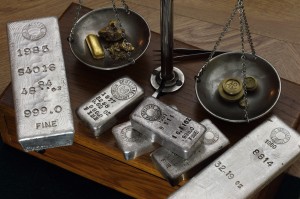Top 5 Myths Silver Investors Still Believe Today

Because silver is more affordable compared to other precious metals, it comes as no surprise that the market is filled with speculators who place short term bets, hoping to get rich overnight. While paper players like this are able to control the price of silver for a few months, it is necessary to mention that they erroneously base their decisions on perception rather than reality. It is these perceptions – often followed by poor investment decisions – that have strongly contributed to the misconceptions regarding the silver market these days we are going to discuss in this guide.
- Silver coins are more abundant than gold coins
Gold has had a good reputation and was deemed as valuable from immemorial times, whereas silver only achieved this status a couple of centuries ago. Therefore, because it didn’t bear the precious metal marking, silver was recklessly utilized and never recycled. As of such, it is estimated that today there are only 1.4 billion ounces of silver as opposed to 3 billion ounces of gold. In spite of the fact that the mining industry manages to produce around 80 million more ounces of silver annually, all signs suggest that the silver stockpiles will reach the equivalent of the gold resources in less than 15 years.
- The high price of the precious metal make it less desirable by manufacturers
While it is true that the industry demand for silver stagnated during the previous decade – especially if you think that silver went from $4 to $20 per ounce during that time – let’s not forget that the amount of the precious metal utilized for manufacturing cell phones and computers is not that high after all. Not only is this demand independent from the price, but it is predicted that it will grow with the discovery of new technologies.
- The price of silver is influenced by global economic changes
With the recession of 2008, it was estimated that the demand for silver for manufacturing and jewelry dropped by roughly 80 million ounces in a relatively short period. To stabilize the price of silver, investors thought the only solution implied making up for the huge differences, which was said to be around 100 million ounces. This was a terrible decision for the economies, because this action led to a significant decrease of the physical demand of the precious metal followed by an inevitable plunge in the price of silver.
- Retail investors don’t intend to re-monetize silver
Considering the buying and selling silver activities over the past two centuries, you might be tempted to believe this is actually true. However, at a close analysis of the market you will discover numerous attempts from authorities – especially Mexico and the United States – to bring back silver coins into the market.
- Silver is bound to get recycled in the near future
Perhaps due to its scarcity, many believe that silver – and particularly silver jewelry – will be melted down in the near future. Frankly, this argument doesn’t stand considering that certain pieces of silver jewelry cost more than the price per bullion for instance. Moreover, you have no way of gathering all the silver jewelry pieces in one place. There isn’t just one person owning millions of ounces of silver jewelry, but rather the metal is owned – in very small amounts – by more than one billion people worldwide.



